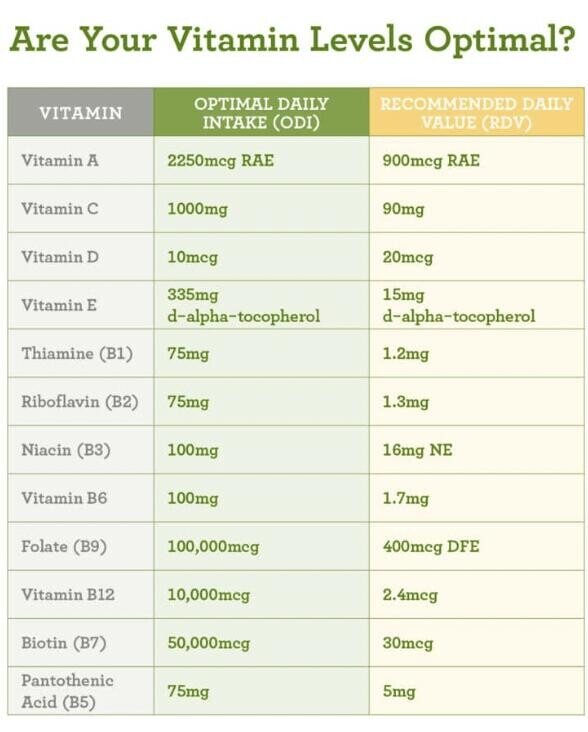5 things ADHD medications can’t fix
Share Article
Latest Posts
April 7, 2024
With the skyrocketing prescriptions for stimulants like Adderall and Ritalin and the looming shadow of a stimulant shortage, it’s crucial to hit the pause button and think: Is our inability to focus genuinely due to ADHD, or could it be the result of underlying health conditions, stress, or lifestyle choices?
Tell a psychiatrist or psych nurse practitioner, who’s possibly burdened with student loans and a mortgage, working for a telemedicine company more interested in prescription volume than patient health, that you’re struggling to focus, and you MIGHT end up with a prescription faster than checking yourself out in the Zoom preview before turning your camera on.
Pharmacists can testify to the surge in stimulant prescriptions and the challenges they face. They’re often placed in a tough position, forced to dispense medications despite shortages and facing backlash when they adhere to regulations. Whether it’s dealing with shortages, questioning unusual orders, or denying early refill requests, pharmacists often bear the brunt of patient frustration unjustly.
The rush to prescribe, driven by companies more interested in profits than patient care, clouds the issue further. This murky situation underscores the importance of understanding what stimulants can and cannot do, particularly for those new to the world of ADHD and professionals trying to navigate their workdays more effectively.
Here are 5 things ADHD medications cannot fix:
1. Nutritional Deficiencies

Embarking on a culinary quest for cognitive health, we find Omega-3 fatty acids, vitamin D, and L-tyrosine as the stalwart allies in our journey. Omega-3 fatty acids, the brain’s building blocks, are found in abundance in fatty fish like salmon, mackerel, and sardines. They are the architects of cell membrane integrity, ensuring fluid communication channels within the brain, essential for mood regulation and cognitive sharpness.

Vitamin D, the sunshine vitamin, not only battles the blues but also fortifies our mental fortress. Beyond its synthesis through sunlight exposure, vitamin D luxuriates in egg yolks, fortified foods, and the flesh of fatty fish, playing a pivotal role in brain health and neurotransmitter synthesis.

L-Tyrosine, the precursor to dopamine, is the herald of focus and mood elevation. Found in protein-rich foods like cheese (especially Parmesan), soy products, lean meats, and pumpkin seeds, L-tyrosine ensures the brain’s dopamine factories are well-fed, countering the deficit often observed in ADHD.

Solution: Initiate a Dietary Analysis: Start by taking a close look at your current diet. The goal isn’t to overhaul your eating habits overnight but to identify which nutrients or minerals you might be lacking.
- Incorporate Missing Nutrients Gradually: Once you’ve pinpointed the deficiencies in your diet, begin to slowly introduce foods rich in those specific nutrients or minerals. This approach ensures your body and taste preferences can adjust without feeling overwhelmed.
- Maintain a Food Journal: Documenting your daily intake can be enlightening. A food journal not only helps you track the incorporation of new nutrients but also enables you to monitor your progress and identify patterns or foods that particularly benefit you.
- Observe and Reflect: Pay attention to how your body responds to the dietary changes. Are you feeling more energetic? Do you notice improvements in your skin, mood, or overall health? Recording these observations can be motivating and inform further adjustments to your diet.
- Consult a Professional: If you’re unsure about where to start or if dietary changes alone aren’t addressing your nutritional deficits, seeking advice from a nutritionist or dietitian can provide tailored guidance based on your specific needs.

2. Gut Health: The Metropolis of Medication Metabolism
Imagine your gut as a bustling metropolis, where digestion and absorption skyscrapers tower high. If this urban digestive landscape is in disarray—congested with poor dietary choices or damaged by inflammation—then the thoroughfares for medication transport are obstructed. Medications, including those for ADHD, are largely processed in this gut metropolis. When the digestive system is compromised, it’s similar to a city’s transportation system breaking down: the medication can’t reach its destination effectively, diminishing its potential benefits. A healthy gut ensures smooth transit and optimal medication efficacy, highlighting the critical need for a balanced microbiome

Here are solutions to a better gut:
1. Cultivate a Diverse Dietary Landscape: Just as a thriving city celebrates diversity, your gut flora thrives on a variety of foods. Incorporate a wide range of fruits, vegetables, whole grains, and fermented foods into your diet. These foods are rich in fibers and probiotics, acting as the foundational blocks for a healthy gut ecosystem, encouraging the growth of beneficial bacteria.
2. Implement Traffic Control for Inflammatory Foods: Inflammation can clog the thoroughfares of your gut city, disrupting the smooth flow of nutrients and medications. Identify and reduce intake of foods that are known to cause inflammation, such as processed foods, fructose corn syrup, sugars, and trans fats. Think of this as implementing a low-emission zone, limiting the intake of foods that can cause digestive traffic jams.
3. Construct Detours Around Stress: Chronic stress can lead to roadblocks in your digestive metropolis, hindering the absorption and efficacy of medications. Incorporate stress-reduction techniques such as mindfulness, meditation, or yoga into your daily routine. These practices can help manage stress levels, ensuring that your gut’s transportation system runs smoothly.
4. Maintenance and Repair with Adequate Hydration and Sleep: Hydration acts as the sanitation department for your gut city, helping to remove waste and ensure clear pathways for medication absorption. Similarly, adequate sleep is like nightly road maintenance for your gut, allowing your digestive system to repair and regenerate. Aim for at least 7-9 hours of quality sleep per night and maintain hydration throughout the day to support gut health.
5. Foster Community Planning with Prebiotics and Probiotics: Prebiotics and probiotics are like the urban planners of your gut city, fostering growth in the right areas and ensuring the city can adapt and thrive. Prebiotics (found in foods like garlic, onions, and bananas) nourish beneficial bacteria, while probiotics (found in fermented foods like yogurt, kefir, and sauerkraut) add beneficial strains of bacteria to your gut. Together, they ensure a balanced and healthy gut microbiome.
6. Regular Check-Ups: Just as a city undergoes regular planning reviews, regular check-ups with a healthcare professional can help monitor the health of your gut. They can provide personalized advice and adjustments to your diet and lifestyle, ensuring your gut metropolis remains vibrant and functional.
3. Depressive symptoms

Navigating the mist-shrouded paths where depression and inattentive ADHD converge, we encounter shared signposts of apathy and anhedonia—markers of diminished interest and pleasure that obscure the journey for both travelers. However, the DSM-5, the atlas of mental health, charts distinct territories for each condition. While these paths intersect, revealing shared landscapes of symptoms, the guides to treatment diverge, leading us down fundamentally different trails.
Medications for ADHD, similar to swift sprinters, offer a burst of focus and energy with their quick half-life. These treatments momentarily cut through the fog of inattention, their effects as fleeting as the clarity of a sprinter’s breath in the chill air. For instance, Adderall, a beacon in the ADHD armamentarium, shines its light for merely 9 to 14 hours before dusk falls again on the mind’s landscape.
In contrast, the terrain of unipolar depression demands the endurance of a marathon runner. Treatments such as Prozac (Fluoxetine), with its enduring half-life extending up to 4 to 6 days for the parent compound and 4 to 16 days for the active metabolite, sustain a steady pace. This longer half-life ensures a continuous illumination of serotonin’s balance, casting a prolonged glow that reaches the deeper recesses of depression, far beyond the realms ADHD medications can illuminate.
For those journeying through the tumultuous realms of bipolar depression, the steadying lighthouse of Lithium, bearing a half-life of approximately 24 hours, becomes a guiding star. It tempers the tempests of mood swings, illuminating a path through both the depressive depths and the manic storms, offering a beacon of stability in a sea of emotional turbulence.
As we stand at the crossroads of diagnosis, it becomes evident that recognizing these nuanced differences is not just clinical precision—it’s a compass for effective treatment. It ensures that travelers on either path find their way through the fog, guided by treatments that address the unique contours of their journey, whether it be the swift dashes required by ADHD or the enduring marathon to overcome depression. This discernment paves the way for tailored therapies that illuminate the path to wellness, ensuring each traveler finds their way home.
Solution: If you identify with these symptoms, work with Psychologist/ therapist to rule out depression. If considered MDD/Bipolar, MD/NP should consider adding SSRI or mood stabilizer like lithium or lamictal.
4. Thyroid Levels: The Dial of Cognitive and Physical Energy

A balanced thyroid acts as the body’s thermostat, regulating everything from energy to mood, mirroring a well-tuned engine. An underactive thyroid (hypothyroidism) is like a thermostat stuck on low, leading to sluggishness, foggy thinking, and a lack of focus—symptoms that mimic inattentive ADHD. Conversely, an overactive thyroid (hyperthyroidism) cranks the thermostat too high, resulting in restlessness, irritability, and an excess of energy, similar to the hyperactivity observed in ADHD. Both states disrupt the body’s harmony, illustrating how thyroid function can mirror or masquerade as ADHD, underscoring the importance of a comprehensive evaluation to tailor the treatment accurately.
Solution: request your PCP to obtain annual thyroid panel to determine current levels.
5. Sleep Deprivation

It’s well-documented across numerous studies that sleep deprivation has significant, wide-ranging consequences on our well-being—impairing everything from cognitive function to emotional regulation. While stimulant medications for ADHD, such as Adderall, are effective in elevating dopamine levels and enhancing focus for periods, they fall short of addressing the underlying issues wrought by lack of sleep. Particularly, they do not remedy the deficits in emotion regulation and impulsivity that are exacerbated by insufficient rest.
Consider the cautionary tale of Sam Bankman-Fried, a notable figure whose regimen included multiple doses of Adderall daily and chronic sleep deprivation, sleeping merely 4 hours per night. His recent sentencing to 25 years for crypto fraud underscores the dangers of compromised decision-making under the dual shadows of stimulant dependency and sleep loss. This scenario vividly illustrates that, much like you wouldn’t trust a sleep-deprived captain, jolted awake by stimulants, to navigate a cargo ship safely past bridges or icebergs, managing ADHD and its associated challenges requires more than just medication.
Solution: Improve sleep hygiene. Here are some strategies by ADDitude Magazine
Summary:
In the realm of ADHD management, we recognize that medication is invaluable but not a standalone solution. The quest for cognitive and emotional wellness encourages a broader exploration beyond pharmaceuticals, highlighting the significance of nutrition, gut health, depression, and thyroid balance in our holistic well-being and response to treatment.
Embracing Holism in ADHD Care
The rising tide of stimulant prescriptions underscores the urgency for a holistic treatment approach. ADHD’s complexity, with its diverse symptoms, demands integrated care strategies that encompass nutritional support, mental health care, and hormonal equilibrium.
The Interconnected Path to Wellness
As we merge the pathways of mental health and holistic care, the limitations of ADHD medications illuminate the necessity for a multifaceted treatment model. Incorporating dietary improvements, gut health maintenance, mental health evaluations, and hormonal assessments forms a scaffold for ADHD management, enhancing medication efficacy and promoting enduring wellness.
A New Narrative in ADHD Treatment
The evolving narrative of ADHD treatment calls for a shift from isolated interventions to a comprehensive, integrated approach. By advocating for holistic strategies, we recognize the intricate needs of those with ADHD, steering towards a future where health and healing are viewed through a wider lens.
The information provided on this website is for general informational purposes only and does not constitute medical advice.
Stay Connected with Us

